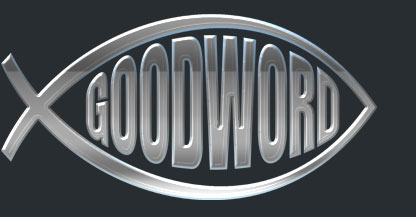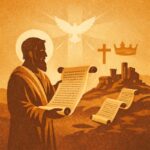| Host: | Tiago Arrais |
|---|---|
| Guests: | Mathilde Frey and Jody Washburn |
| Quarter: | Exodus |
| Lesson: | 10 |
| Sabbath: | September 6th, 2025 |
Key Verses: Exodus 24-31
Key Questions
- What are some of the possible connections between the Sanctuary and the creation of the world (and the Garden of Eden)? What is the author trying to convey with these parallels?
- How is God’s desire to to dwell with the people different from Pharaoh’s rule? What does it mean that God chooses to dwell in a movable tent instead of a fixed temple (and why are these things established in the desert)? How might this shape our understanding of church, presence, and holiness?
- Why was the Sanctuary to be built exclusively on the basis of voluntary offerings from the people?
- Why does the priest wear names of the tribes on his garments? What does it mean for spiritual leaders today to “carry” their people into God’s presence?
- God fills Bezalel with the Spirit to create beauty (this is the first time the Spirit “fills” someone in the Bible). How might we value artisanship and creativity as divine gifts in our communities?
Theological Insights
“[the presence of God] beyond Sinai, is to be accomplished by constructing a dwelling place for God… assuring God’s accessibility to the community. Virtually all of the rest of Exodus focuses on that portable structure… It is no wonder that the materials in this third part of Exodus are often referred to as ‘the tabernacle texts.’” Meyers, Exodus (NCBC), 219.
“There are seven divine speeches in chapters 25—3 to correspond to the seven days of creation. Some of the speeches have parallels with creation days, and both accounts conclude with a concern for keeping the sabbath (31:17; Gen. 2:1-3).” Fretheim, Exodus, 270.
“Readers who have noticed the failings and defects of prior human projects (especially in Babel and Egypt)… should be interested to see whether the new (joint) building project can correct the errors of prior human artistry and, more important, complete the Lord’s own acts of making. Noah’s ark, built according to a divine blueprint, was the vehicle for a re-Creation of terrestrial life. Can the Tabernacle, built according to a divine blueprint and housing the (different) Ark of the Covenant, become the vehicle for the world’s second sanctification: a sacred space for the indwelling of the Lord among His people? Might the Tabernacle function somehow as a ‘completion’ of Creation?” Kass, Founding God’s Nation, 455.
“[Divine Presence] was further and further distanced from earth as a result of humanity’s sins… beginning with Abraham, the Divine Presence came closer and closer, until, with the making of the Mishkan, it came as close as it had at the beginning… The making of the Mishkan was therefore a cosmic event; a return to Eden and a mending of the exile between humanity and God. God would once again have a home… among human beings. It would be sited in the centre of the Israelites’ camp, traveling when they traveled, resting when they rested. No longer would the Israelites sense the presence and proximity of God only in miracles or moments of crisis. It would be a daily event, a constant epiphany. Only thus can we understand the parallels between the Tabernacle and creation.” Sacks, Covenant and Conversation.




